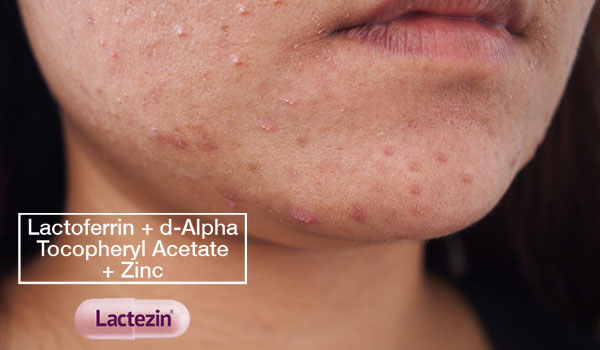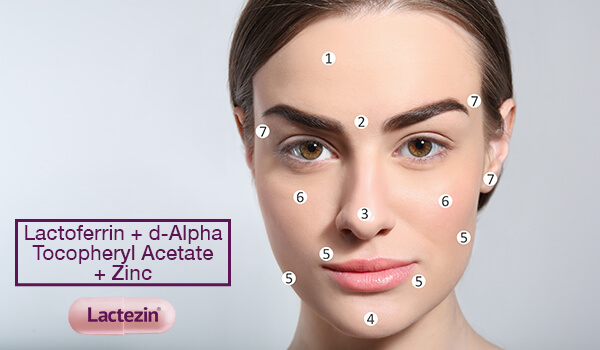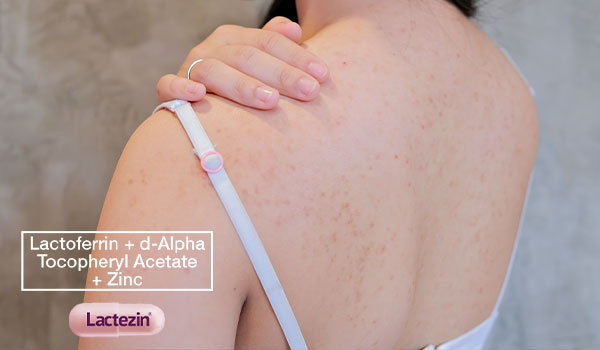Here’s Everything You Need To Know About Fungal Acne

The thing about fungal acne is that it's not actually acne. It’s a total misnomer because it’s hardly the common bacterial acne that most people are aware of. One look at it though will make you think they’re your ordinary pimples because of their appearance: red bumps resembling papules, skin eruptions that look like white heads. Having so many similarities with bacterial acne, treating this skin condition can be a challenge to some. To be able to address this, the first thing to do is to understand the nature of your skin condition and know what you’re actually dealing with. What then, is fungal acne?
What is Fungal Acne?
Fungal acne is an infection in your skin’s hair follicles, called Malassezia folliculitis. This condition is a result of an overgrowth of yeast which is naturally present in the human skin. The body is normally able to balance this kind of yeast, but when the skin’s natural environment is altered, yeast overgrowth occurs. This leads to the infection of hair follicles, triggering the growth of skin eruptions called fungal acne. They appear as red pus bumps on the skin, closely resembling the appearance of papules or pimples. They usually show on the back, chest, arms, and face.
How do you differentiate fungal acne from “normal” acne?
Although there are physical similarities, fungal acne is entirely different from acne vulgaris or the usual bacterial acne that we know. While bacterial acne is caused by overproduction of oil, clogged pores, bacterial growth and hormonal changes, fungal acne is mainly caused by an overgrowth of yeast levels in the hair follicles. Some of the differences between fungal acne and bacterial acne are the following:
- Area
Bacterial acne is most common on the face where there's an overproduction of skin sebum. Fungal acne appears mostly on the back, chest, arms, and face, infecting the hair follicles. - Itchiness
Fungal acne is often annoyingly itchy. Bacterial acne is more painful than itchy. - Size
Skin eruptions caused by fungal acne often come in similar, regular sizes. Bacterial acne manifests through pimples, whiteheads, and blackheads in different sizes and varying degrees of inflammation. - Groups
Fungal acne often comes in groups and clusters of whitehead-like skin eruptions. Meanwhile, bacterial acne is less “grouped” and is more scattered.
What causes fungal acne?
There are many causes of fungal acne, most of which have a lot to do with humidity, sweat, excess heat, diet, and medications which cause an imbalance of yeast level that’s naturally present in the skin. The most common causes are the following:
- Tight clothes
Clothes that are too tight and are made of non-breathable fabrics can make you sweat excessively, trapping the moisture in the skin. This alters the skin’s natural environment, signaling an overgrowth of skin yeast, leading to fungal acne. - Wearing sweaty clothes for too long
Know that trapped moisture is one of the primary factors that can encourage fungal acne. Wearing sweaty gym clothes for hours is a red flag. The same applies to re-wearing of unwashed workout clothes, as these pieces of apparel might have already grown some fungi in the fabric. Wearing them exposes your skin to fungal acne. - Faulty diet
It’s important to note that yeast thrives on carbohydrates. Hence, diets that are carbs and sugar heavy can easily attract fungal acne. Processed foods with simplified sugar and carbs are perfect accomplices of this skin condition. - Overuse of Antibiotics
Excess antibiotics can also alter the skin’s natural level of fungus. Mismanaged use of antibiotics can sharply reduce the bacteria level in your skin, allowing yeast overgrowth. This results in an infection of hair follicles leading to fungal acne. - Climate
People living in warm, tropical countries are more prone to getting fungal acne. This is because anything warm and moist (think sweat and hot weather) are attractive breeding places for yeast that causes fungal acne.
How do you treat and prevent fungal acne?
The key to treatment and prevention of fungal acne is to restore and maintain the natural balance of yeast and bacteria on skin. This can be done through a number of ways:
- Use loose clothes with breathable fabrics.
Breathable fabrics are friendlier on the skin because they allow enough airflow to give your skin proper air circulation. This helps avoid trapped moisture on skin that can encourage yeast overgrowth. Wearing loose clothes can also avoid too much friction and low airflow on skin. - Shower right after a sweaty activity.
This is especially important for people who workout regularly or those whose work entails frequent sweating. Shower right after an exercise or work and change into clean, freshly-washed clothes. Never re-wear used sweaty clothes because any trapped moisture in the fabric can breed fungi-acne causing yeast and bacteria. - Have a balanced diet.
Avoid carbs and sugar heavy foods that can potentially “feed” on yeasts. A good and balanced mix of fruits, veggies, and protein prevents yeast overgrowth. - Try using dandruff shampoo as body wash.
Most dandruff shampoos contain zinc pyrithione; a very potent antifungal ingredient. Hence, dandruff shampoos make a good body cleanser for those who have fungal acne. As you shower, lather and let it sit on the skin for a few minutes before rinsing it off. - Use an oral medication.
Because yeast is basically fungi, it helps to use an oral medication that has skin-healing properties. Use Lactezin: an over-the-counter, clinically tested, anti-acne oral medication. It contains Lactoferrin with anti-bacterial and anti-inflammatory properties, Vitamin E that keeps the skin cells healthy, and Zinc that boosts skin’s immunity, helping it heal and repair.
Taken twice daily for 2 weeks, Lactoferrin + d-Alpha Tocopheryl Acetate + Zinc (Lactezin) gives you visible results. Lactezin, The Pimple Expert is available in all leading drugstores nationwide. You may also purchase online through Lazada and Shopee.
SOURCES:
https://www.byrdie.com/fungal-acne-4843813
https://www.healthline.com/health/all-about-fungal-acne
https://www.allure.com/story/fungal-acne-pityrosporum-folliculitis-guide


